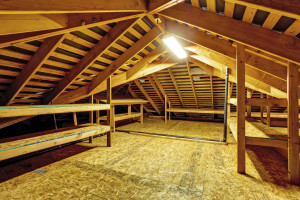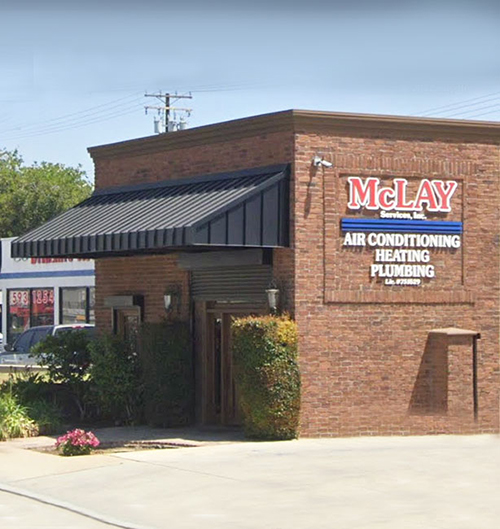You have probably driven by a home or a small commercial building and seen fan blades spinning out of an opening of the roof, looking like hot air is being released to the skies. While, yes, the appliance is designed to release hot air out of the building, it doesn’t always lower air conditioning costs. In many cases, the air conditioner has to work overtime because of how the electronic attic appliance functions.
It may seem counter-intuitive, but when it comes to a house, powered attic ventilators (PAVs) – which are designed to pull hot air out of an attic – raise home cooling costs, in many situations. The makeup of a home and the physics of how air moves both work against the intended benefits of a PAV.
Air Leaks in the Attic Floor
A powered attic ventilator wouldn’t be problematic if a home’s attic floor were completely airtight, but that’s not feasible in virtually every house. The tops of interior partition walls often harbor a number of small openings, and other air leaks come from ceiling features such as recessed can lights and attic hatches. Insulation cannot seal the leaks in an attic floor; instead, insulation acts as a filter for air that passes through it.
How Air Moves in the Attic
When a PAV pulls hot air out of an attic, something needs to fill that space. The air pressure needs to stay relatively constant throughout the building space. So what happens? Air gets pulled from outdoors and indoors to fill the void. That’s right: indoors too. So if your AC and has cooled down and dehumidified the air inside your home, if the PAV is turned on, some of that cool air could be lost through the leaks in the attic floor.
PAVs Increase the Air Exchange Rate in an Attic
Indoor air quality researchers have found that PAVs hardly work any better than having passive ventilation from the roof to the outside world. PAVs rapidly increase the air exchange rate in an attic in comparison to passive ventilation, but that’s not necessarily a positive attribute. In short, the PAV is making the air move more quickly than it needs to. If the home has a very high number of attic floor air leaks and the PAV is turned on, the PAV will remove the hot air from the attic; however, it will also pull the cool air that the AC unit created right into the attic as well. In turn, this causes the AC to turn back on in order to reach the desired temperature. This may result in higher cooling costs.
Cool Air Can Escape Through the Attic due to a Running PAV
Even in newer homes, it is common to find more than 1 square foot of combined air leaks in the attic floor. Imagine if it’s summer and air inside the home has been cooled to 75 degrees. If the PAV is turned on, some of that 75-degree air is getting pulled into the attic, and let’s say 95-degree outside air is being drawn into the living space to replace it. That means the air conditioner now has to work long and hard to cool the outside air down 20 degrees and then dehumidify it. This process is adding dollars on to your monthly utility bill. When you then consider it costs a little bit of money to run your PAV in the first place, not to mention the added work it places on an AC, you have to question why a PAV was installed in the first place.
The above scenario is a best-case situation. Many homes, especially older ones, have well more than a combined 1 square foot of air leaks. If a PAV is running, the air conditioner will seemingly have to run endlessly to make up the difference in temperatures between air leaving through the attic and air entering the home. The AC may lag behind on the dehumidification part of the process, and the air inside the house will be left feeling clammy and unhealthy.
Alternatives to PAVs for Improved Indoor Air Quality
McLay Services has several options that we consider more effective for saving energy and improving indoor air quality than a powered attic ventilator, including:
- Passive continuous ridge and soffit venting
- Added insulation
- Duct Sealing
- Duct wrapping
- Thermal bypass repair
- Radiant barriers
All of the above options don’t consume any electricity, which right away is an improvement on PAVs. If you have a PAV installed in your roof in the Rancho Cucamonga area, call McLay Services to have an air conditioning technician disconnect the appliance and remove its motor and fan. The unit will then function as passive ventilation, which is more effective than having it turned on and siphoning some of the cool air from inside your home. See more about our indoor air quality services.
For Help on Installing or Uninstalling a PAV or to Improve Ventilation in Your Attic, Call McLay Services:



